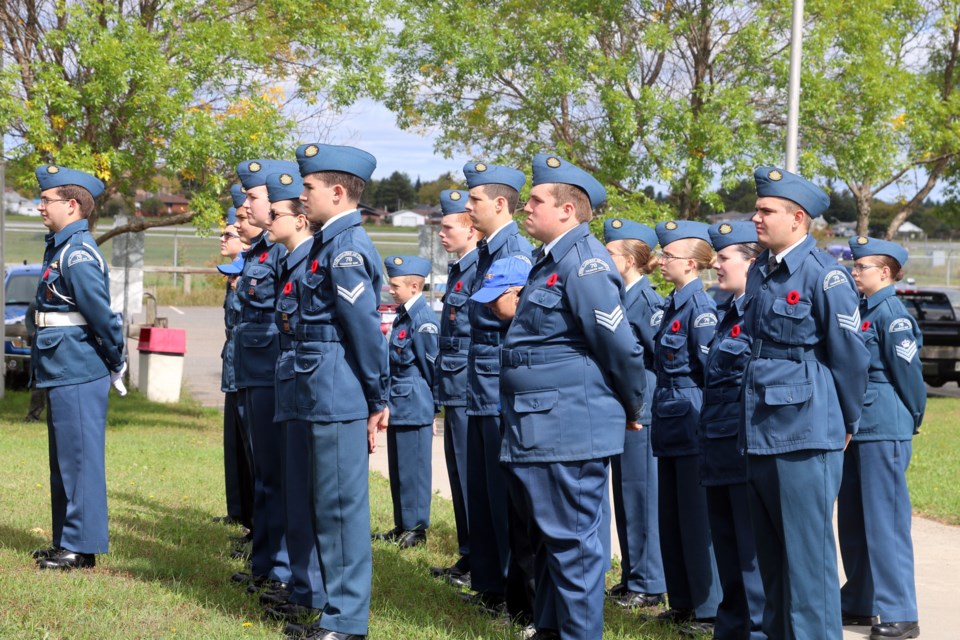THUNDER BAY - It was one of the earliest battles of the Second World War and one of the first major victories for the allied forces. Every year, the local Royal Canadian Air Cadets Squadron remembers the day the tides turned in the air.
On Sunday, the 70 Thunder Bay Royal Canadian Air Cadet Squadron held a ceremony in front of the memorial at the Thunder Bay International Airport to commemorate the Battle of Britain and commanding officer, Capt. Laura Nahle, said it is an important day for the young cadets.
“Thunder Bay and the units in Thunder Bay are really good at remembering all of the ceremonies for all of our elements,” she said. “Not only do we do Remembrance Day, but we have the battle of Britain and the Battle of the Atlantic.”
In Canada, Sept. 17 is Battle of Britain Day, which marks one of the largest aerial battles that took place on Sept. 15 during the Battle of Britain.
The aerial campaign, which saw Britain suffer through an endless series of bombing raids by the Luftwaffe known as the Blitz, began in July 1940 and would take over the skies for the next four months.
On Sept. 15, the Luftwaffe launched one of its largest bombing raids of the campaign, sending more than 1,200 aircraft into the skies over Britain. Royal Air Force Fighter Command, which included several Royal Canadian Air Force Squadrons, was able to repel the attack, marking a turning point in the pivotal battle.
“That was when Germany was coming over and trying to bomb Britain into submission before the supposed Sea Lion invasion that never took place,” said Richard Mortensen, regional representative for the Air Cadet League of Canada. “This was the point where they sort of threw everything they had at it, and from here on it got less and less.”
Nahle said it is important for the Air Cadets to remember the contribution and sacrifices of the young men and women serving their country during the Second World War.
“For the cadets, one of the main focuses of our program is to instill an interest in the history of the Canadian Forces,” she said. “That is where the cadet program was founded, during the First and Second World Wars. For them, it is really instilling a sense of history and where they came from.”
For 15-year-old Sgt. Madeline Baird, who has been with the Air Cadets for four years, the ceremony is not only about honouring those young service men and women who came before her, but also teaching her fellow cadets about Canada’s past.
“We learn about leadership and history and I think it’s important that we get to part of this parade as we get to learn more about our history,” she said. “It’s good for younger cadets to learn about the history so they know about what happened and what they represent. I like introducing cadets to a history they probably didn’t know about.”
The city of Fort William played a key role in the Battle of Britain and throughout the war by helping manufacture the machines that took to the skies at the local Canada Car plant.
“There were a couple of aircraft that were made, if not in full, then in part, here in Thunder Bay,” Nahle said. “That is very important for the city. Aircraft that were fabricated here, like the Helldiver, wasn’t actually used by the Canadian forces, but used by the American, British, and Australian forces, so we created a product that went all over the world. So that is something to be proud of.”
